Set Date and Time
Setting dates and times for your task in your project can help you to keep track of which tasks are falling behind and which tasks are completed beforehand.
You will also get reminded via in-app notifications or email notifications of upcoming tasks or tasks that are about to be due.
If you switch your List or Sublist to the Timeline view, you can also see your tasks with dates spread out in a horizontal timeline view. It can provide you with a clear overview of when the project starts and ends.
Set a due date
Decide when a task should be done (aka give it a deadline) by setting a due date.
Click on the date icon to set a due date. Or press < on the keyboard when the task(s) is selected.
![]()
You can click on a shortcut, Today, Tomorrow, or Next Week to quickly add a due date.
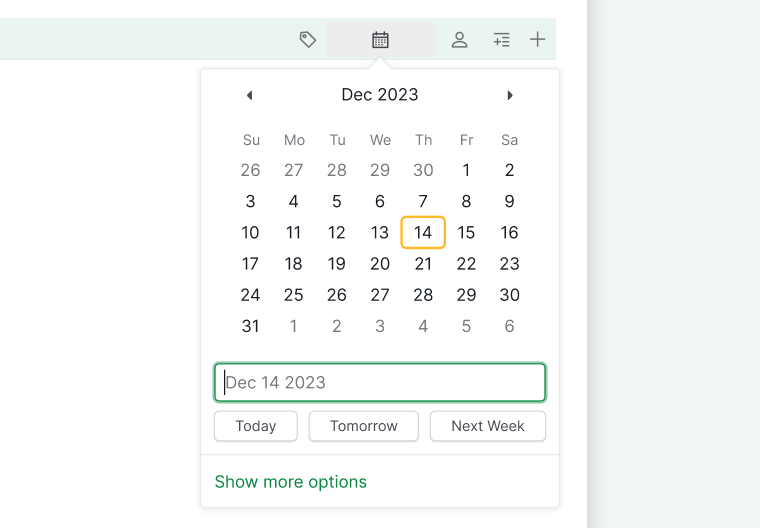
To clear the due date, click Clear date.
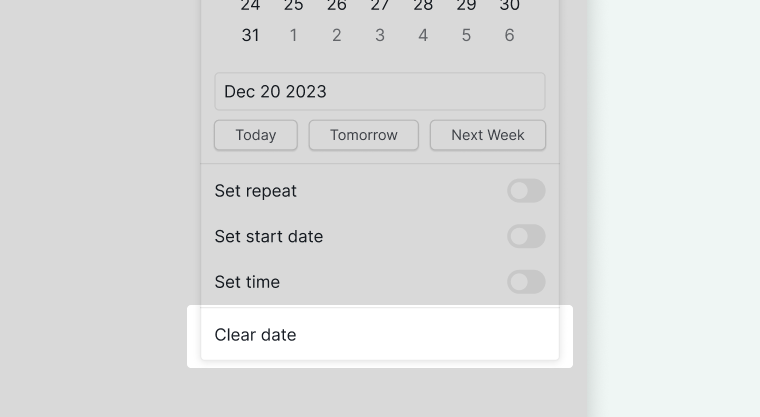
Tip: When editing a task, type < to assign a due date inline.
Set a start date
Setting start date is only available in the Professional, Premium, Enterprise plans. More information can be found on our pricing page.
You can decide when you would like to start working on a task.
Click on the date icon to set a start date. Or press < on the keyboard when the task(s) is selected. Then click on Show more options at the bottom of the date picker.
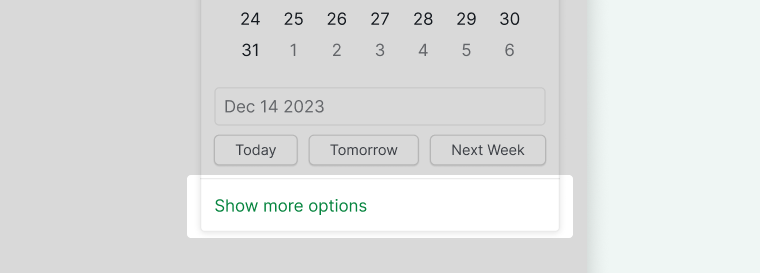
Toggle on Set start date and pick a date or enter a date in the Start field.
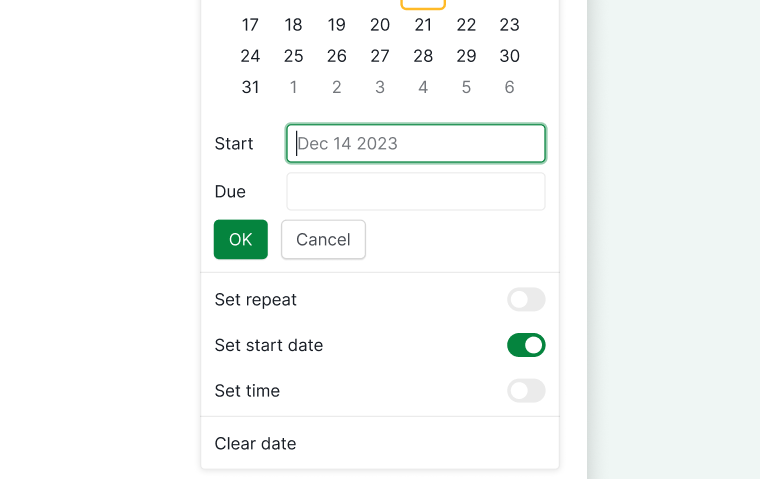 =
=
Set start/due time
Setting start time is only available in the Professional, Premium, Enterprise plans. More information can be found on our pricing page.
Click on Show more options at the bottom of the date picker, and toggle on Set time.
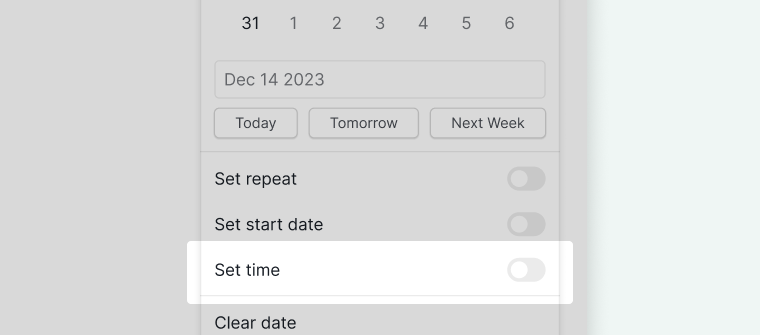
You can either press the up or down arrow on your keyboard to select the time or type in the hour and minute manually.
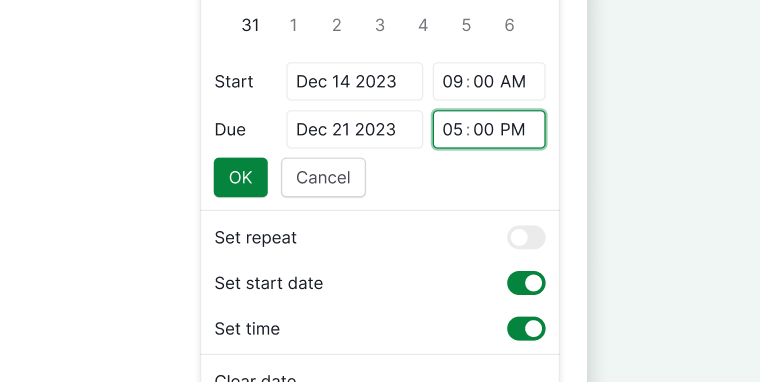
Note: With both start and due date, you can see the period or duration of your tasks when you sync to Google Calendar or other.
Tip: You can enable 24-hour time in the Account Settings.
Set tasks as recurring
Setting tasks to repeat daily, monthly, or yearly is only available in the Professional, Premium, Enterprise plans. More information can be found on our pricing page.
You can repeat a task that happens periodically. Once you have completed a recurring task, Quire will automatically add the same task in a few seconds with the new date.
Here are a few options on how frequently you can repeat your tasks:
- Daily
- Weekly
- Monthly
- Yearly
Click on the date icon, and toggle on Set to repeat in the date picker.

Choose how often and what day you want to repeat the task.
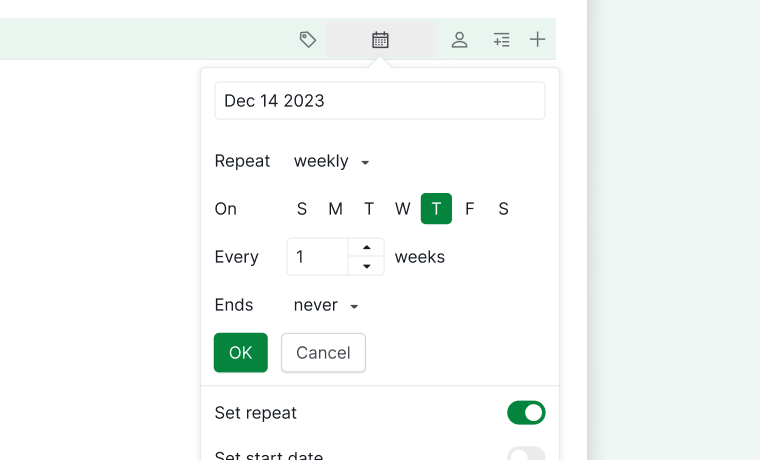
Since latest completion
When you set the task to repeat daily, you can choose to repeat it since the last date you completed the task. This option will affect the new generated task’s due date.

Here’s an example: Set the task to repeat every 1 day. In the default setting (the Since latest completion is not selected), when the task gets completed, the new generated task’s due date will be tomorrow, and if the new task gets completed again, the next generated task’s due date will be two days ahead.

If the option is selected, when the task gets completed, the first new generated task’s due date will be tomorrow. And if the new task gets completed again on the same day, the next generated task’s due date will still be tomorrow.

Duplicate subtasks when the task is completed
If the recurring task is a parent task, the subtasks will recur after you have completed the parent task. However, you can unselect the option for the subtasks not to recur automatically in the date picker.

Show comments from the previous recurring tasks
When a task recurs, the newly created task will appear as a brand new task without the comments from the previous task. You can see the comments from the previous recurring tasks by clicking on the option at the bottom of the detail panel.
To quickly navigate to the previously recurring task, you can click on the task ID above the comments or Go to task in the More Options dropdown menu.


Read more on our blog post about setting recurring tasks.
